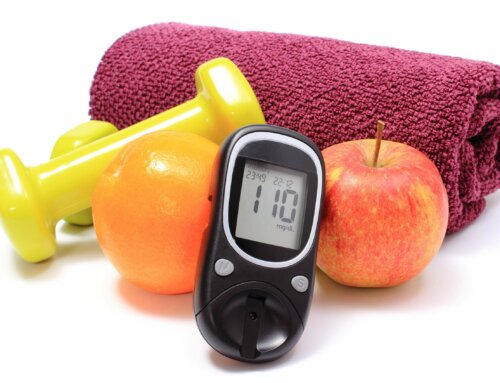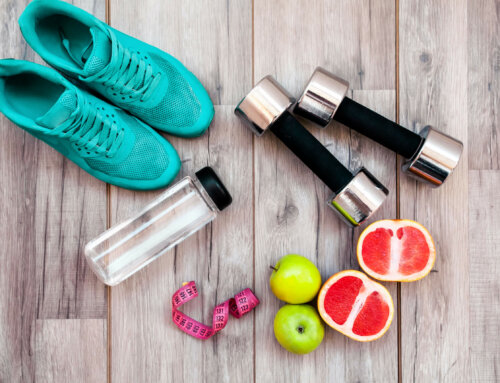Exercise can easily produce positive results to anyone who has a chronic illness including heart disease, lung ailments, joint/back issues and diabetes. It helps each condition in a variety of ways but can specifically impact diabetes by using insulin more efficiently and ultimately lowering blood sugars. Each person should get medical clearance from their health care provider prior to starting an exercise program. They can advise you about the length as well as level of intensity of your program. Always start slowly if you have not engaged in physical activity in a while. Realize that chest pain, shortness of breath, joint or back pain, dizziness or an abnormal heart rhythm are not normal and must be reported to your health care team.
New research from Sweden, that included over 15,000 participants, showed that people with diabetes type 2 who do not exercise regularly have a 70% increased risk of cardiovascular complications compared to those who do exercise. It also showed that those who exercised but were in the “low activity group had a 25% greater risk of coronary involvement compared to those in a higher activity group”. The definition of low level activity is 1-2 times a week for 30 minutes whereas high level is defined as three or more times a week for 30 minutes.
Winter months tend to cause higher A1C levels due to more inactivity, holiday celebrations and eating comfort foods. According to Dr. LeBrasseur of the Mayo Clinic, “sitting is the new smoking. Over 60% of those over age 65 are inactive in this country”. It is noted that lifestyle change is much more difficult to institute as compared to prescribing or taking a pill. Remember any movement or activity you do is going to offer improved brain function, blood pressure, blood sugar readings as well as lipid control. Think about daily life activities including gardening, taking the stairs, raking leaves or daily household chores. You can even try marching in place in front of the television. Exercise can increase brain health function because it promotes blood flow to the brain and increases blood vessel production as well as boosts brain proteins called neurotrophins. This can maintain fitness in the brain and may prevent complications including mild cognitive decline or Alzheimer’s disease.
Here are some tips to get you back on track after the New Year or if you are just getting started with a complete exercise program to improve your general health.
- Cardio or aerobic fitness training – This includes utilizing oxygen, using the large muscle groups, perspiring, increasing your heart and breathing rate and maintaining the training level for 10 minutes up to several hours depending on your fitness level. The guidelines state 30 minutes in a single day but it can be broken down into smaller increments if time, neuropathy or other limitations are noted. Aerobic activities include walking, hiking, jogging, jumping rope, doing exercise step classes, running, swimming or walking in the pool, bicycling, rowing, using a stepper, elliptical or line dancing. Some of the aerobic activities require good balance and high endurance so start slowly and know what is comfortable for you. Other activities impact the feet especially if you have open foot ulcers or neuropathy.
- Strength training – often called weight training may frighten off many people. Muscle loss or sarcopenia limits mobility, leads to falls, loss of independence, and may require long term rehabilitation. Muscle mass peaks in your early 40s and many people lose 50% of their muscle mass by age 80. The average person loses about 30% of muscle mass during their lifetime. Muscle mass helps you keep the function of standing, climbing stairs or getting out of a chair without assistance. Muscles store extra sugar and assist in raising your metabolic rate or “how many calories we burn at rest”. Muscles can even improve our ability to defend against stressors. Strength training can increase your endurance and make daily activities easier. You can use free weights, circuit machines, exercise balls, kettle bells, dumbbells, resistance bands or home items like canned vegetables or soups. Think about gym memberships, community clubhouses, the YMCA, hospital fitness centers or investing in home equipment. Many health insurance policies now include exercise facilities memberships. Even using your own body’s weight as resistance can add to muscle mass. Think about doing push-ups, pull-ups, lunges, sit-ups or planks for great exercises. Lift weights 2-3 times a week and always rest on alternate days. It should take 30 minutes for a complete upper and lower body workout. Consider purchasing a few sessions with an instructor or trainer to learn proper technique and prevent injury. Add core training which helps back and abdominal strength and builds the small muscles around the spine. These are especially helpful if you suffer from lower-back pain.
- Balance exercises – Balance is lost as we age and should be part of an exercise program. Simply standing on one foot for 20 seconds each day can improve balance. Try it while waiting in line, cooking or brushing your teeth. Think about yoga classes or Tai Chi to increase balance.
- Stretching – There is controversy about whether you should stretch before or after exercise. It does promote circulation and could be a personal preference. Discuss with a trainer to see which stretches to do and when to do them will benefit you the most.
- Remember that exercise will affect your blood sugar. The usual response is lower blood sugar so keep glucose tablets, gel, or shots available. Carry ID which includes a list of your medications and healthcare providers. Think about exercising 30 minutes after a meal when your blood sugars are high from eating. Have a snack of carbohydrates-15 grams if you do not exercise around a meal.
- Wear shoes with support and stability that feel comfortable and fit your feet. Always wear fresh socks like diabetes socks that provide cushioning and protection from the shoe. Use pool shoes for any water activity.
- Find something that you enjoy. This will help with motivation. Exercise needs to last a lifetime not just the month of January. Think about having a buddy system or music to stay motivated. Consider a reward system for yourself.
- Understand about hypothermia or heat loss during the winter months. Low temperatures make the internal organs stay warm by shunting blood away from the extremities. Wear gloves to prevent a problem. Try water proof or water resistant foot wear to keep feet dry. Consider moisture wicking socks as well. Heat loss from the head is about 50% when the temperature drops to 32 degrees Fahrenheit. Wearing a hat or helmet will slow heat loss from the head. Wrapping a scarf around the face and neck is good to prevent heat loss and helps keep the mucus membranes of the nose and mouth moist. Find out what the wind chill factor is by listening to the weather report. Layering clothing is the best way to stay warm by providing insulation. Look for clothing that has “moisture wicking” ability and takes the perspiration away from the body. As the day heats up you are able to remove clothing which prevents over heating. Include a thin wind-proof jacket. Remember if testing your blood sugar outside- meters may not work properly in cold weather. Never let your insulin freeze.
- Stay hydrated even in the cold temperatures. You still lose fluid by sweating. Dehydration can increase skin tears which leave the feet open to fungi, bacteria, and infections. Always check the condition of your feet prior to putting on your socks.
Exercise is good for the mind, body and spirit and can help make you feel better. Start slowly, stay focused and motivated!
NOTE: Consult your doctor first to make sure my recommendations fit your special health needs.






Leave A Comment